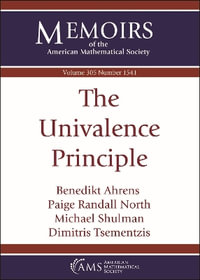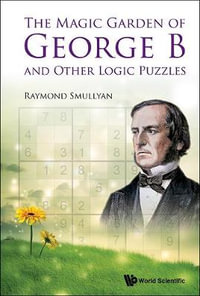| Preface | p. v |
| Quantum Entanglement | p. 1 |
| Algebraic measures of entanglement | p. 3 |
| Introduction | p. 3 |
| Rank of a tensor | p. 4 |
| Tensors in (C[superscript 2])[superscript [multiply sign in circle]2] | p. 8 |
| Tensors in (C[superscript 2])[superscript [multiply sign in circle]3] | p. 8 |
| Tensors in (C[superscript 2])[superscript [multiply sign in circle]4] | p. 18 |
| Kinematics of qubit pairs | p. 25 |
| Introduction | p. 25 |
| Preliminaries | p. 28 |
| Basic classification of states | p. 34 |
| Projectors and subspaces | p. 36 |
| Rank 1 | p. 36 |
| Rank 2 | p. 39 |
| Rank 3 | p. 41 |
| Rank 4 | p. 43 |
| Positivity and separability | p. 43 |
| Lewenstein--Sanpera decompositions | p. 47 |
| Basic properties of optimal LSDs | p. 51 |
| Optimal LSDs of truly positive states | p. 54 |
| Examples | p. 60 |
| Self-transposed states | p. 60 |
| Generalized Werner states | p. 63 |
| States of rank 2 | p. 66 |
| Acknowledgments | p. 72 |
| Invariants for multiple qubits: the case of 3 qubits | p. 77 |
| Introduction | p. 77 |
| Invariants for compact Lie groups | p. 79 |
| The simplest cases | p. 82 |
| The case of 3 qubits | p. 85 |
| A basic set of invariants for 3 qubits | p. 88 |
| Some implications for other representations | p. 95 |
| Universality of Quantum Gates | p. 99 |
| Universal quantum gates | p. 101 |
| Statements of main results | p. 101 |
| Examples and relations to works of other authors | p. 104 |
| Proof of theorem 4.1 (outline) | p. 106 |
| First step: from universality to exact universality | p. 107 |
| Second step: reduction to n = 2 | p. 108 |
| Fourth Step: analyzing the Lie algebra g | p. 109 |
| Fifth Step: the normalizer of H | p. 110 |
| Proof of theorem 4.2 | p. 112 |
| A variant of theorem 4.1 | p. 113 |
| Quantum Search Algorithms | p. 117 |
| From coupled pendulums to quantum search | p. 119 |
| Introduction | p. 120 |
| Classical analogy | p. 120 |
| N Coupled pendulums | p. 121 |
| The algorithm | p. 125 |
| Rules of the game | p. 125 |
| Algorithm | p. 126 |
| Towards quantum searching | p. 127 |
| The quantum search algorithm | p. 128 |
| Why does it take O([radic]N) cycles? | p. 130 |
| Applications and extensions | p. 131 |
| Counting | p. 131 |
| Mechanical applications | p. 132 |
| Quantum mechanical applications | p. 133 |
| Generalization of Grover's algorithm to multiobject search in quantum computing, Part I: continuous time and discrete time | p. 135 |
| Introduction | p. 135 |
| Continuous time quantum computing algorithm for multiobject search | p. 137 |
| Discrete time case: straightforward generalization of Grover's algorithm to multiobject search | p. 147 |
| Generalization of Grover's algorithm to multiobject search in quantum computing, Part II: general unitary transformations | p. 161 |
| Introduction | p. 162 |
| Multiobject search algorithm using a general unitary transformation | p. 163 |
| Quantum Computational Complexity | p. 169 |
| Counting complexity and quantum computation | p. 171 |
| Introduction | p. 171 |
| Preliminaries | p. 173 |
| Qubits, quantum gates, and quantum circuits | p. 175 |
| Classical complexity | p. 178 |
| Classical computations on a quantum circuit | p. 192 |
| Relativizing quantum computation | p. 194 |
| Equivalence of FQP and GapP | p. 195 |
| Strengths of the quantum model | p. 200 |
| Oracle results | p. 202 |
| Limitations of the quantum model | p. 207 |
| Conclusions | p. 214 |
| Quantum Error-Correcting Codes | p. 221 |
| Algorithmic aspects of quantum error-correcting codes | p. 223 |
| Introduction | p. 223 |
| General quantum error-correcting codes | p. 224 |
| General errors | p. 224 |
| Local errors | p. 229 |
| Binary quantum codes | p. 233 |
| Construction | p. 233 |
| Example: binary Hamming code | p. 239 |
| Additive quantum codes | p. 241 |
| Construction | p. 241 |
| Example: quantum Hamming code | p. 246 |
| Conclusions | p. 250 |
| Clifford codes | p. 253 |
| Introduction | p. 253 |
| Motivation | p. 255 |
| Quantum error control codes | p. 256 |
| Nice error bases | p. 259 |
| Stabilizer codes | p. 262 |
| Clifford codes | p. 264 |
| Clifford codes that are stabilizer codes | p. 265 |
| A remarkable error group | p. 269 |
| A weird error group | p. 269 |
| Conclusions | p. 270 |
| Quantum Computing Algebraic and Geometric Structures | p. 275 |
| Invariant polynomial functions on k qudits | p. 277 |
| Introduction | p. 277 |
| Polynomial invariants of tensor states | p. 279 |
| The generalized determinant function | p. 281 |
| Asymptotics as k [right arrow] [infinity] | p. 282 |
| Quartic invariants of k qudits | p. 283 |
| Z[subscript 2]-systolic freedom and quantum codes | p. 287 |
| Preliminaries and statement of results | p. 287 |
| Mapping torus constructions | p. 294 |
| Verification of freedom and curvature estimates | p. 301 |
| Quantum codes from Riemannian manifolds | p. 308 |
| Quantum Teleportation | p. 321 |
| Quantum teleportation | p. 323 |
| Introduction | p. 323 |
| Teleportation of a two-state system | p. 326 |
| The formal scheme | p. 327 |
| Cavity QED implementation | p. 330 |
| Discrete N-state quantum systems | p. 337 |
| Entangled state teleportation | p. 340 |
| Two-qubit entangled state | p. 341 |
| N-qubit entangled state | p. 344 |
| Continuous quantum variable states | p. 346 |
| Nonlocal measurements | p. 346 |
| Wigner functions | p. 348 |
| Concluding remarks | p. 351 |
| Quantum Secure Communication and Quantum Cryptography | p. 357 |
| Communicating with qubit pairs | p. 359 |
| Introduction | p. 360 |
| The mean king's problem | p. 361 |
| The Vaidman-Aharonov-Albert puzzle | p. 361 |
| The stranded physicist's solution | p. 362 |
| The mean king's second challenge | p. 367 |
| A different perspective | p. 369 |
| BB84: cryptography with single qubits | p. 371 |
| Description of the scheme | p. 372 |
| Eavesdropping: minimizing the error probability | p. 373 |
| Eavesdropping: maximizing the raw information | p. 375 |
| Cryptography with qubit pairs | p. 377 |
| Description of the scheme | p. 377 |
| Eavesdropping: minimizing the error probability | p. 380 |
| Eavesdropping: maximizing the raw information | p. 384 |
| Idealized single-photon schemes | p. 385 |
| BB84 scheme with two state pairs | p. 385 |
| Qubit-pair scheme with four state pairs | p. 388 |
| Direct communication with qubit pairs | p. 392 |
| Description of the scheme | p. 392 |
| Minimal error probability | p. 395 |
| Acknowledgments | p. 398 |
| Commentary on Quantum Computing | p. 403 |
| Transgressing the boundaries of quantum computation: a contribution to the hermeneutics of the NMR paradigm | p. 405 |
| Review of NMR quantum computing | p. 406 |
| Review of modular arithmetic | p. 407 |
| A proposed "quantum" implementation | p. 409 |
| Aftermath | p. 412 |
| Index | p. 421 |
| Table of Contents provided by Syndetics. All Rights Reserved. |
























